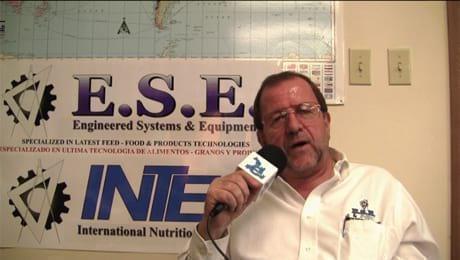Alfalfa Pellets in Dairy Cattle Rations
Forum: Using Alfalfa Pellets in Dairy Cattle Rations
Hi friends,
Has anybody used pelletted alfalfa in their dairy cattle rations. If I have chance I want to use it. But I have doubts because of the particular size of the TMR. If I use the alfalfa pellets instead of hay, the particular size of the TMR will be small. And I think this may cause the acidosis, affect the rumen metabolism. So If there is somebody has used it, share us his experiments, I would be glad.
Thank you.
I dont know about the particle size in alfalfa pellets, but I share your worry on rumen health and I want to add concern about the suitability of this product for ruminants if you use it to replace hay in the ration. This could be a health and welfare problem in cows.
Why continue to move away from rations which anyway may be close to the limits of being appropriate to the species (even for dairy cows of high genetic merit susceptible to lots of metablic health disorders) ?
We tried using Alfalfa pellets in Middle East but the project was not successful as hay pellets or full feed pellets (combined concentrate and hay pellets) were. Also considerable manufacturing problems were faced in Alfalfa pelleting procedure. therefore we considered offering alfalfa and Rhodes grass in the natural form.
Dr. R.R.S.CHANDRAVSNHI
Dear All,
Why one would try Alfalfa pellets in a commercial dairy operation, surely does the harm rather to do the good, Experimental feeding comparisons clearly proved that using alfalfa pellets has induced a higher proportion of SARA and accompanied Poor hoof health.
When given a choice between Alfalfa pellets and Hay, one should always choose hay as it provides a greater surface area for micobial action rather not to elevate a sudden surge of lactate in the rumen.
Dr Mathan
.jpg&w=3840&q=75)

From waste to resources: A successful model of biocircular economy
I want to do my thesis in economic significance of alfalfa in developing country. Can you help me preparing table of contents?
Hi,
Pelleted alfalfa definitely suffers from too high quality differences among products in the market, so I would recommend you to be very careful and to control your supplier as quality can be really poor.
Good quality pellets are very difficult to find as usually good quality alfalfa is just not pelleted. Do not trust just CP level as any quality indication, it would not be the first time that straw gets urea and some nice green color.
Regarding your concerns about particle size in my experience you are totally right, this product has no effective fiber whatsoever and leaves the rumen very quicky.
The greatest and best virtue of alfalfa is the quality of its fiber, the same that is lost by the pelletizing and / or grinding process as it is intended to be used in some places.
.jpg&w=3840&q=75)

From waste to resources: A successful model of biocircular economy
Pelleting of grass is not surely an ideal feeding method, as it turns into very fine and grass lost its special characteristics that mean effective NDF which causes acidosis. lameness, fat depression disturbance of rumen microbial ecosystem. As a result, less production performance of dairy cattle.


















